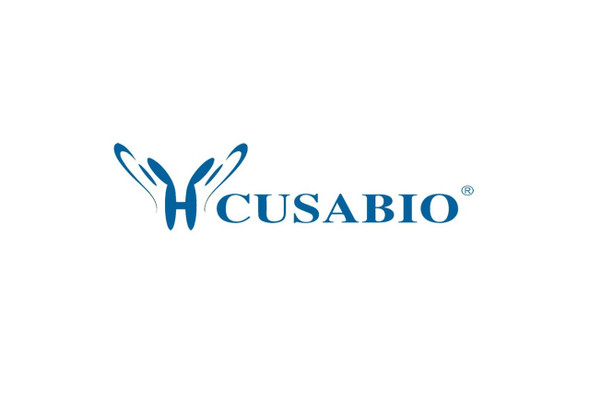Cusabio Virus & Bacteria Recombinants
Recombinant Cricetulus griseus Protein disulfide-isomerase (P4HB) | CSB-YP823188DXU
- SKU:
- CSB-YP823188DXU
- Availability:
- 3 - 7 Working Days
Description
Recombinant Cricetulus griseus Protein disulfide-isomerase (P4HB) | CSB-YP823188DXU | Cusabio
Alternative Name(s): Prolyl 4-hydroxylase subunit beta p58
Gene Names: P4HB
Research Areas: Signal Transduction
Organism: Chinese hamster
AA Sequence: DAPEEEDNVLVLKKSNFAEALAAHNYLLVEFYAPWCGHCKALAPEYAKAAAKLKAEGSEIRLAKVDATEESDLAQQYGVRGYPTIKFFKNGDTASPKEYTAGREADDIVNWLKKRTGPAATTLSDTAAAETLIDSSEVAVIGFFKDVESDSAKQFLLAAEAVDDIPFGITSNSGVFSKYQLDKDGVVLFKKFDEGRNNFEGEVTKEKLLDFIKHNQLPLVIEFTEQTAPKIFGGEIKTHILLFLPKSVSDYDGKLGNFKKAAEGFKGKILFIFIDSDHTDNQRILEFFGLKKEECPAVRLITLEEEMTKYKPESDELTAEKITEFCHRFLEGKIKPHLMSQELPEDWDKQPVKVLVGKNFEEVAFDEKKNVFVEFYAPWCGHCKQLAPIWDKLGETYKDHENIIIAKMDSTANEVEAVKVHSFPTLKFFPATADRTVIDYNGERTLDGFKKFLESGGQDGAGDDDDVDLEEALEPDMEEDDDQKAVKDEL
Source: Yeast
Tag Info: N-terminal 6xHis-tagged
Expression Region: 20-509aa
Sequence Info: Full Length of Mature Protein
MW: 57 kDa
Purity: Greater than 90% as determined by SDS-PAGE.
Relevance: This multifunctional protein catalyzes the formation, breakage and rearrangement of disulfide bonds. At the cell surface, seems to act as a reductase that cleaves disulfide bonds of proteins attached to the cell. May therefore cause structural modifications of exofacial proteins. Inside the cell, seems to form/rearrange disulfide bonds of nascent proteins. At high concentrations, functions as a chaperone that inhibits aggregation of misfolded proteins. At low concentrations, facilitates aggregation (anti-chaperone activity). May be involved with other chaperones in the structural modification of the TG precursor in hormone biogenesis. Also acts a structural subunit of various enzymes such as prolyl 4-hydroxylase and microsomal triacylglycerol transfer protein MTTP. Receptor for LGALS9; the interaction retains P4HB at the cell surface of Th2 T helper cells, increasing disulfide reductase activity at the plasma membrane, altering the plasma membrane redox state and enhancing cell migration.
Reference: "Protein-disulfide isomerase is a component of an NBD-cholesterol monomerizing protein complex from hamster small intestine."Cai T.-Q., Guo Q., Wong B., Milot D., Zhang L., Wright S.D.Biochim. Biophys. Acta 1581:100-108(2002)
Storage: The shelf life is related to many factors, storage state, buffer ingredients, storage temperature and the stability of the protein itself. Generally, the shelf life of liquid form is 6 months at -20?/-80?. The shelf life of lyophilized form is 12 months at -20?/-80?.
Notes: Repeated freezing and thawing is not recommended. Store working aliquots at 4? for up to one week.
Function: This multifunctional protein catalyzes the formation, breakage and rearrangement of disulfide bonds. At the cell surface, seems to act as a reductase that cleaves disulfide bonds of proteins attached to the cell. May therefore cause structural modifications of exofacial proteins. Inside the cell, seems to form/rearrange disulfide bonds of nascent proteins. At high concentrations, functions as a chaperone that inhibits aggregation of misfolded proteins. At low concentrations, facilitates aggregation (anti-chaperone activity). May be involved with other chaperones in the structural modification of the TG precursor in hormone biogenesis. Also acts a structural subunit of various enzymes such as prolyl 4-hydroxylase and microsomal triacylglycerol transfer protein MTTP. Receptor for LGALS9; the interaction retains P4HB at the cell surface of Th2 T helper cells, increasing disulfide reductase activity at the plasma membrane, altering the plasma membrane redox state and enhancing cell migration.
Involvement in disease:
Subcellular Location: Endoplasmic reticulum, Endoplasmic reticulum lumen, Melanosome, Cell membrane, Peripheral membrane protein
Protein Families: Protein disulfide isomerase family
Tissue Specificity:
Paythway:
Form: Liquid or Lyophilized powder
Buffer: If the delivery form is liquid, the default storage buffer is Tris/PBS-based buffer, 5%-50% glycerol. If the delivery form is lyophilized powder, the buffer before lyophilization is Tris/PBS-based buffer, 6% Trehalose, pH 8.0.
Reconstitution: We recommend that this vial be briefly centrifuged prior to opening to bring the contents to the bottom. Please reconstitute protein in deionized sterile water to a concentration of 0.1-1.0 mg/mL.We recommend to add 5-50% of glycerol (final concentration) and aliquot for long-term storage at -20?/-80?. Our default final concentration of glycerol is 50%. Customers could use it as reference.
Uniprot ID: Q8R4U2
HGNC Database Link: N/A
UniGene Database Link: N/A
KEGG Database Link: KEGG
STRING Database Link: N/A
OMIM Database Link: N/A






